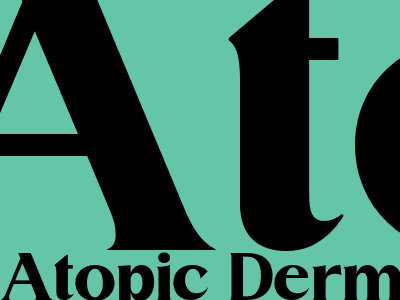A Deep Dive into Atopic Dermatitis: Understanding Its Causes, Symptoms, and Treatments
Introduction
Atopic dermatitis (AD), also known as eczema, is a chronic inflammatory skin condition that affects individuals of all ages. It is characterized by dry, itchy, and inflamed skin, often accompanied by flare-ups and periods of remission. In this comprehensive guide, we will delve into the causes, symptoms, and various treatment options for atopic dermatitis, providing valuable information to help individuals manage this condition effectively.Causes of Atopic Dermatitis
The exact cause of atopic dermatitis is unknown, but it is believed to result from a combination of genetic and environmental factors. Genetics play a significant role, as individuals with a family history of AD are more likely to develop the condition. Environmental triggers, such as allergens (e.g., dust mites, pollen), irritants (e.g., soaps, detergents), and stress, can exacerbate AD symptoms.
Atopic dermatitis is associated with a weakened skin barrier, which allows allergens and irritants to penetrate the skin more easily. Additionally, individuals with AD have an overactive immune system, which can lead to inflammation and skin irritation.
Symptoms of Atopic Dermatitis
The symptoms of atopic dermatitis can vary from person to person. Common symptoms include dry, itchy skin, redness, and inflammation. The affected skin may appear thickened, scaly, or cracked. Eczema can occur anywhere on the body, but it is commonly found on the hands, feet, face, and neck.
In infants, AD often appears as a red, scaly rash on the face, scalp, and body. It can also cause intense itching and discomfort.
Treatment Options for Atopic Dermatitis
Treatment for atopic dermatitis aims to manage symptoms, reduce inflammation, and improve skin barrier function. There is no cure for AD, but with proper care and management, individuals can experience significant relief and maintain good skin health.
Treatment options for AD include:
- Moisturizers: Regular use of emollients and moisturizers helps to strengthen the skin barrier and prevent dryness.
- Anti-inflammatory medications: Topical creams or ointments containing corticosteroids or calcineurin inhibitors can reduce inflammation and itching.
- Antihistamines: Oral antihistamines can help to relieve itching.
- Immunosuppressants: In severe cases, immunosuppressant medications may be prescribed to suppress the overactive immune system.
- Phototherapy: Exposure to ultraviolet light can help to improve skin health in some individuals with AD.
- Lifestyle modifications: Avoiding triggers, managing stress, and wearing loose, cotton clothing can help to reduce flare-ups.


0 Komentar